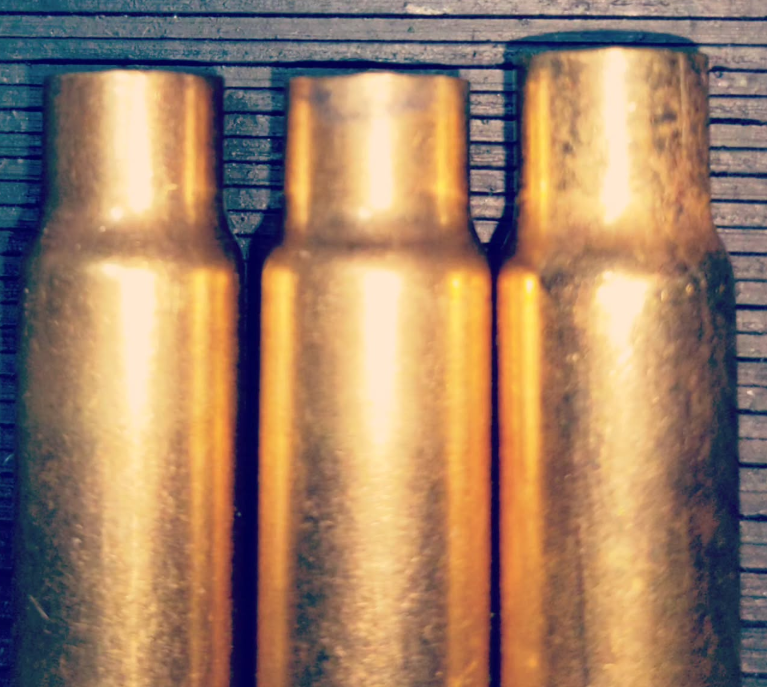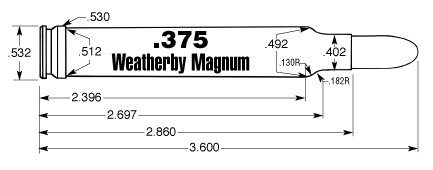.375 Weatherby Magnum
The .375 Weatherby offers quite a bit over it’s parent cartridge, the .375 H&H Magnum. Designed in 1944 by Roy Weatherby and introduced in 1945, it fires both faster and flatter than the original H&H cartridge. It is seemingly a ballistic twin to the Ackley improved version of the .375 H&H, with the main difference being the typical double radius shoulder that Weatherby cartridges are known for. In my own handloads, which are admittedly pretty warm, I come very close to published load velocities. My own handloads will push a 300 grain copper solid at 2,750 feet/second, while advertised velocities are 2,800 feet/second. One fantastically useful property of this cartridge is that one can safely fire the .375 H&H in a .375 Weatherby chamber, and I have done so on several occasions to fireform brass. What this means is, should your ammunition be lost or damaged, a hunt can still be salvaged by using the parent cartridge in it’s place. Fortunately, the .375 H&H is common enough that there is a good chance of finding a box or two, even in the most remote of locations. The same can be said of the .375 H&H Ackley, however, the Weatherby cartridge is a legitimized factory cartridge while the Ackley is still a wildcat. That will make a difference for some, I’m sure, and will be inconsequential for others. In the image below, left, is a factory H&H case, a fireformed H&H case in the Weatherby chamber, and a Norma .375 Weatherby case.
Reloading for the .375 Weatherby can be done by following .375 H&H Ackley Improved load data, where starting loads are at the upper end of the standard .375 H&H load data. This cartridge, seemingly discontinued in favor of the bigger, faster .378 Weatherby, is not overly punishing to shoot even at the high end of load data pushing heavy bullets, and doesn’t seem to be majorly overbore like most of the other Weatherby cartridges. There aren’t many sources of information on this cartridge, which is a shame given it’s versatility. In fact, there isn’t even a mention of this cartridge in my modern load data books. It wasn’t until very recently that the Hodgdon reloading website offered load data.
I dare not post my own load data here, because what is safe in my rifle may not be safe in yours. While it seems to be anemic, recently the Hodgdon reloading website has a great starting point. Accurate Reloading has a page dedicated to the .375 Weatherby, but I would suggest using their load data at your own risk, and that goes for any other load data you come across.


